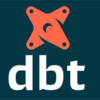pyspark.sql.Column.desc_nulls_last In PySpark, the desc_nulls_last function is used to sort data in descending order, while…
Category: article
In PySpark how sort data in descending order, while putting the rows with null values at the beginning ?
pyspark.sql.Column.desc_nulls_first In PySpark, the desc_nulls_first function is used to sort data in descending order, while putting the rows with null…
Comparing PySpark with Map Reduce programming
PySpark is the Python library for Spark programming. It allows developers to interface with RDDs (Resilient Distributed Datasets) and perform…
Explain dense_rank. How to use dense_rank function in PySpark ?
In PySpark, the dense_rank function is used to assign a rank to each row within a result set, based on…
How does DBT handle dependencies and data lineage?
DBT handles dependencies and data lineage by providing a set of features that allow users to manage and organize data…
How does DBT work with BigQuery, and how does it differ from other BigQuery-related tools?
DBT works with BigQuery by providing a set of features and functionality specifically for data warehousing on BigQuery. DBT allows…
What is DBT and how does it differ from traditional SQL-based ETL tools?
DBT (Data Build Tool) is a command-line tool that helps users write, test, and organize database transformations. It is designed…
What is quoted identifiers in Big query? How to use case-sensitive column and table names in Big query?
Quoted identifiers in BigQuery are used to specify case-sensitive column and table names. They allow you to use column and…
How does Snowflake differ from other data warehousing solutions
Snowflake is a cloud-based data warehousing solution that differs from traditional on-premises and other cloud-based data warehousing solutions in several…
Explain the architecture of Snowflake and how it handles data storage and compression
Snowflake is a cloud-based data warehousing service that uses a unique architecture to handle data storage and compression. It stores…
Zero clone in snowflake-Independent copy of a database, table, or individual file, without duplicating the underlying data.
In Snowflake, a “zero clone” is a feature that allows users to create a new, independent copy of a database,…











